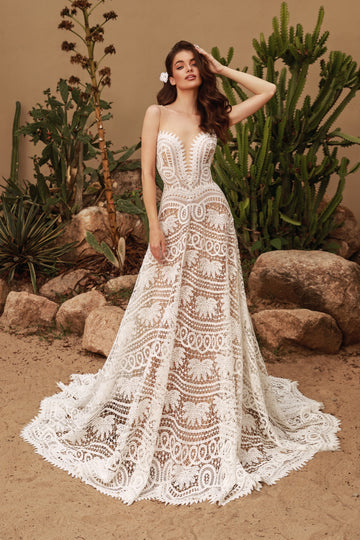Understanding the Importance of Primers for Your Skin
When it comes to makeup application, choosing the right primer is essential, as it creates a smooth canvas for foundation and enhances the overall finish of your makeup. With a myriad of options available, understanding the best primers for varying skin textures and needs can significantly affect how your makeup looks and lasts throughout the day.
What is a Primer?
A primer is a makeup product designed to prepare your skin for foundation and other makeup. Primers cater to different skin needs, such as oil control, hydration, and texture smoothing, making them an essential step in your beauty routine.
Why Choose the Right Primer for Your Skin Type?
Selecting the appropriate primer for your unique skin type and texture is crucial. Using the wrong primer can lead to makeup that looks cakey, uneven, or short-lived. Here, we delve into the various skin textures and the corresponding primers that best meet those needs.
Skin Types and Suitable Primers
| Skin Type | Primer Recommendations |
| Oily Skin | Look for mattifying primers that control shine and oil production. Best ingredients include salicylic acid and tea tree oil. |
| Dry Skin | Opt for hydrating primers infused with glycerin, hyaluronic acid, or oils that lock in moisture. |
| Combination Skin | A balancing primer that hydrates dry areas and mattifies oily zones is ideal. |
| Sensitive Skin | Choose fragrance-free, hypoallergenic options with soothing ingredients such as aloe vera or chamomile. |
| Aging Skin | Primers with anti-aging properties, like peptides and antioxidants, can help create a youthful glow. |
The Best Primers for Various Skin Textures
1. For Oily Skin: Fenty Beauty Pro Filt'r Mattifying Primer
This popular primer is known for its ability to absorb excess oil and control shine, making it a favorite among those with oily skin. Its lightweight formula ensures a soft-focus effect while holding makeup in place all day long.
2. For Dry Skin: Too Faced Hangover Replenishing Face Primer
This primer is perfect for individuals with dry or dehydrated skin. It contains a blend of coconut water and probiotics that deeply moisturize and revive tired skin, providing a radiant finish.

3. For Combination Skin: Smashbox Photo Finish Primerizer
This innovative primer combines the hydrating benefits of a moisturizer with the smoothness of a traditional primer. It adjusts according to your skin's needs, providing hydration where necessary while ensuring a smooth application across all zones.
4. For Sensitive Skin: Laura Mercier Foundation Primer - Radiance
Infused with nourishing oils and vitamins, this foundation primer is gentle on sensitive skin. It gives a hint of radiance without irritation, making it suitable for even the most delicate skin types.
5. For Aging Skin: Tarte Timeless Smoothing Primer
This primer not only smoothens the appearance of fine lines and wrinkles but also gives the skin a youthful glow. Packed with nourishing ingredients like vitamin E and creamy oils, it is designed specifically for mature skin.
How to Apply Primer Effectively
Applying primer properly is crucial for achieving that flawless base. Here are the steps to apply primer effectively:
- Start with a clean, moisturized face to ensure that your skin is prepped for the primer.
- Take a pea-sized amount of your chosen primer and warm it up between your fingers.
- Apply the primer using your fingers, a makeup sponge, or a brush, focusing on areas that need extra attention, such as pores or dry patches.
- Allow the primer to set for a few minutes before applying your foundation for the best results.
Common Questions About Primers
What if I have specific skin concerns like acne or rosacea?
For acne-prone skin, look for primers with salicylic acid or non-comedogenic formulas that won't clog pores. For rosacea, opt for green-tinted primers that can cancel out redness and soothe irritated skin.
Can I use primer if I don’t wear foundation?
Absolutely! Many people use primer alone to smooth their skin's texture and create an even tone. It's also beneficial in providing hydration and protection for your skin throughout the day.
How often should I replace my primer?
Makeup products, including primers, have a shelf life. It's a good practice to replace your primer every six months to a year, depending on its ingredients and your frequency of use. Look for any changes in texture, smell, or appearance as indicators that it might be time to replace it.
The Takeaway: Finding the Best Primer for You
Choosing the best primer for varying skin textures and needs is all about understanding your unique skin characteristics. With the right primer, you can enhance your makeup look and ensure a flawless finish that lasts all day. Don't hesitate to try different products and formulations to discover what works best for your skin. Remember, the key is to cater to your individual skin needs, whether it be oil control, hydration, or smoothing out texture.
As you embrace your beauty routine, keep in mind that the right primer can make a significant difference in not just how your makeup performs, but also in the overall health and appearance of your skin.
To summarize, always consider your skin type when choosing a primer: oily, dry, combination, sensitive, or aging. Experiment with different products, and don’t forget to look for those specific formulations designed to address your unique skincare concerns. With the best primers in your makeup arsenal, you'll be well on your way to achieving that flawless look you desire.
